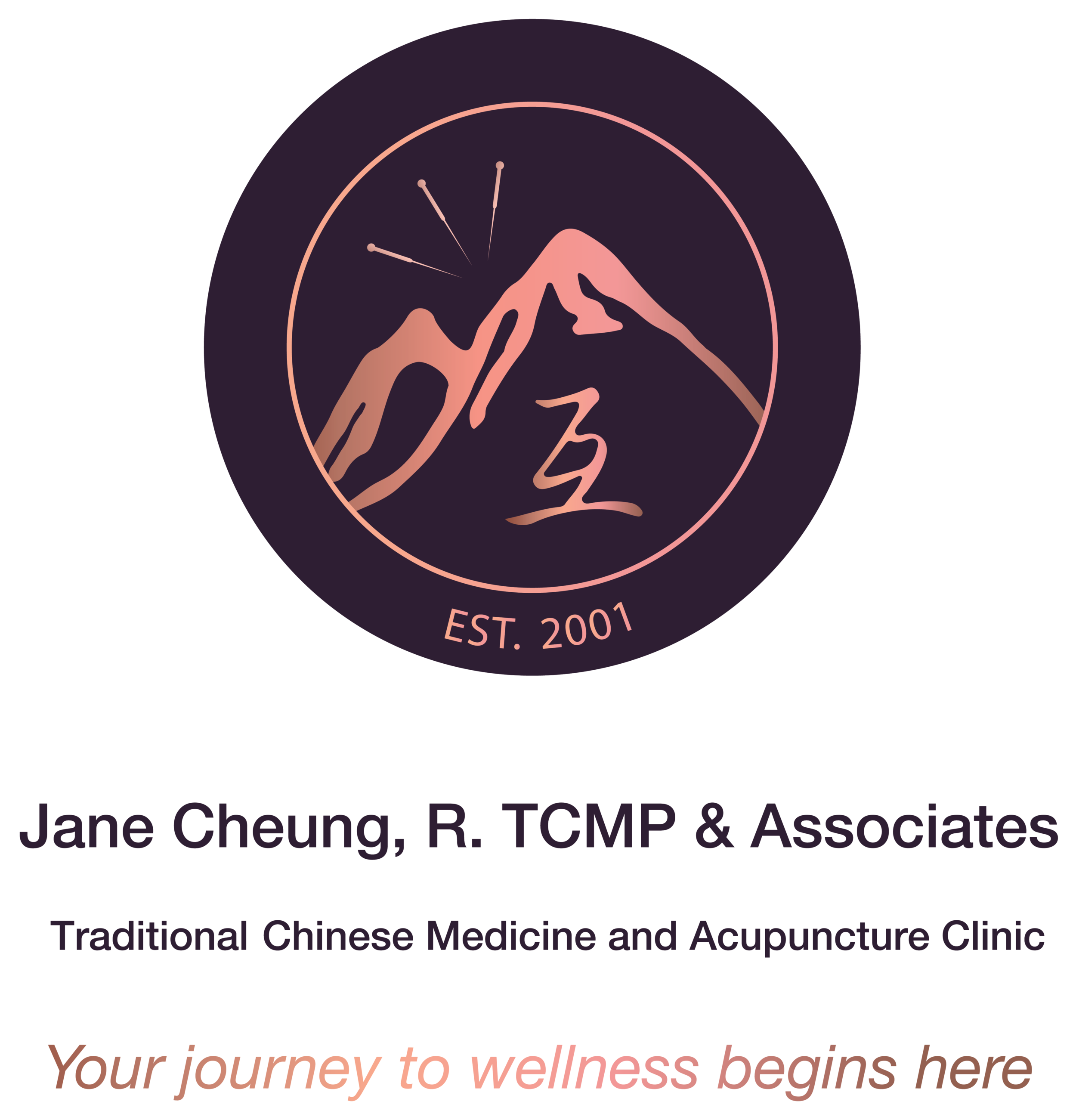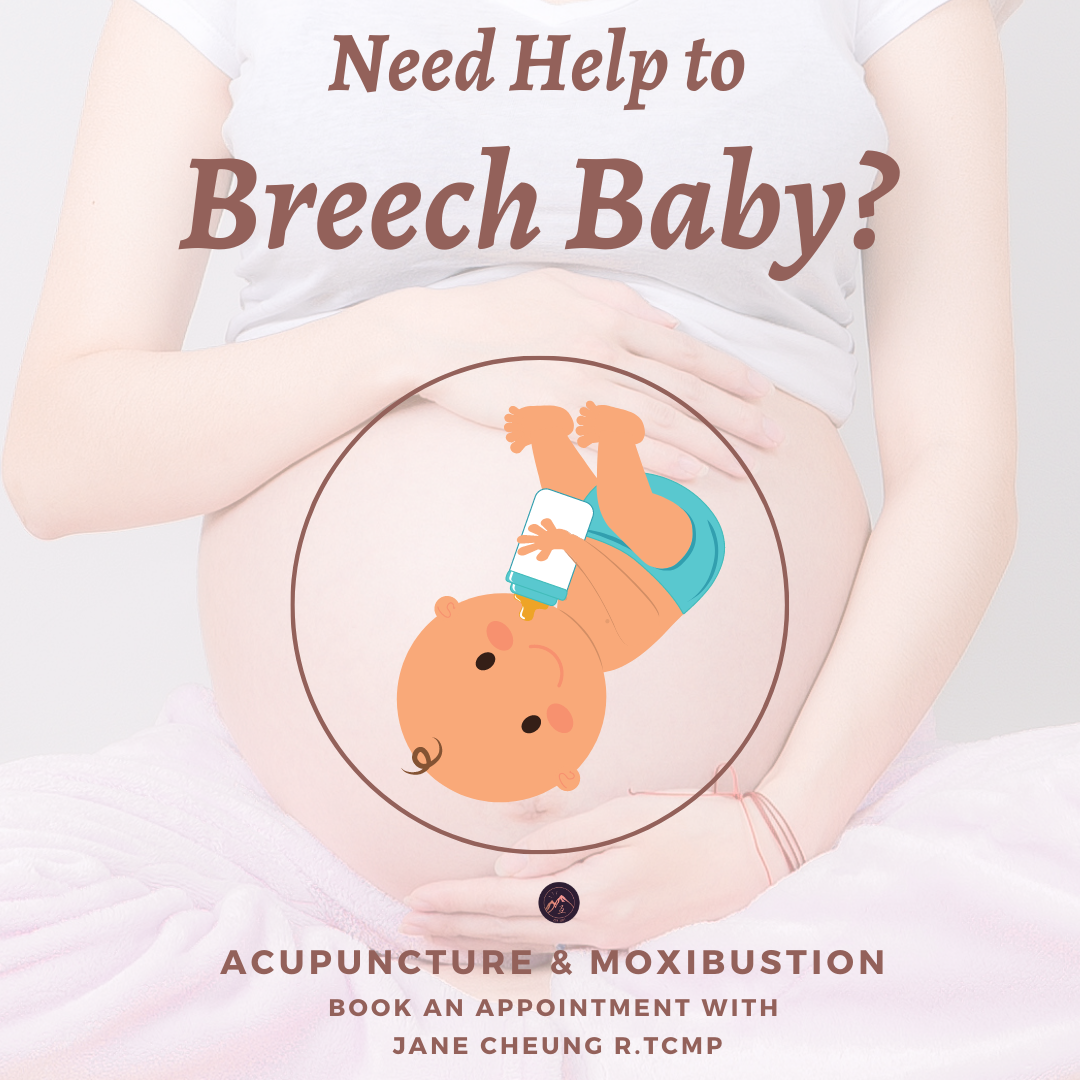Pregnancy Care - Breech and Posterior Baby
Recently, we received inquires regarding breeching babies. Yes, our practitioner Jane Cheung R.TCMP can help you out! Here is what you need to know:
Breech Baby
In fact, about 3-4 percent of all pregnancies will result in the baby being breech. [1] Right before birth, most babies are in a headfirst position in the mother’s uterus. Sometimes, the baby is in a bottom-first (or feet-first) position. This is called a breech birth or breech baby. One of the natural methods to turn the baby that recommended by family doctor.org is acupuncture. [2]
A 2003 study showed the success rate of the acupuncture correction of fetal breech presentation is 76.4%. The researchers believe that acupuncture correction of fetal malpresentation is a relatively simple, efficacious and inexpensive method associated with a lower percentage of operatively completed deliveries, which definitely reflects in improved parameters of vital and perinatal statistics. [3]
Did you know moxibustion is one of the world's oldest techniques for turning a breech baby?
Moxibustion has been used throughout Asia for thousands of years; in fact, the actual Chinese character for acupuncture, translated literally, means "acupuncture-moxibustion” and ancient doctors held it in high regard. In the Nei Jing—a fundamental text in Chinese medicine—moxa is said to “do what the needle cannot.”[4]
Moxibustion involves burning the herb mugwort (or moxa) near specific points along a set of invisible, vertical lines that cross the body, known as meridians. Practitioners believe these meridians correspond to specific organs and, when stimulated, can strengthen blood flow and prompt the release of certain hormones.
"It is thought that stimulating the last point on the bladder meridian brings movement to the kidney channel and helps the baby to turn," says Tom Ingegno, a licensed acupuncturist and doctor of acupuncture and Chinese medicine (DACM) with a master's in Oriental medicine (MSOM). [5]
In a 1998 study in The Journal of the American Medical Association, 75.4% breeches successfully turned in the moxibustion intervention group compared to 47.7% in the control group. 260 pregnant women diagnosed with breech positioning, who were otherwise healthy, were randomized into two groups: the intervention group received moxa treatment; the control group received no treatment other than routine care. All were at 33 weeks gestation. This study has been replicated several times with as high as a 90% success rate. [6]
Moxibustion practice at our clinic
Our clinic is in a multi-disciplinary medical building with minimal to no-scent policy, so we use direct rice grain moxa, smokeless moxa, moxa laser, or magnetic heat lamps when the treatment requires it. With proper instructions and guidance, we would occasionally recommend patients to use moxibustion at home as part of their self-care routine.
Resources:
1. Hannah ME Hannah WJ Hewson SA Hodnett ED Saigal S Willan AR Planned caesarean section versus planned vaginal birth for breech presentation at term: a randomised multicentre trial The Lancet. 2000 Oct 21 https://www.thelancet.com/journals/lancet/article/PIIS0140-6736(00)02840-3/fulltext
2. Breech Babies: What Can I Do if My Baby is Breech? https://familydoctor.org/breech-babies-what-can-i-do-if-my-baby-is-breech/
3. Habek D, Cerkez Habek J, Jagust M. Acupuncture conversion of fetal breech presentation. Fetal Diagn Ther. 2003 Nov-Dec;18(6):418-21. doi: 10.1159/000073135. PMID: 14564112. https://pubmed.ncbi.nlm.nih.gov/14564112/
4. Deng, H., & Shen, X. (2013). The mechanism of moxibustion: ancient theory and modern research. Evidence-based complementary and alternative medicine : eCAM, 2013, 379291. https://doi.org/10.1155/2013/379291
5. What Is Moxibustion and Can It Help Turn a Breech Baby? https://www.parents.com/pregnancy/complications/what-is-moxibustion-and-can-ithelp-turn-breech-babies/
6. Cardini F, Weixin H. Moxibustion for correction of breech presentation: a randomized controlled trial. JAMA. 1998 Nov 11;280(18):1580-4. doi: 10.1001/jama.280.18.1580. PMID: 9820259. https://pubmed.ncbi.nlm.nih.gov/9820259/

